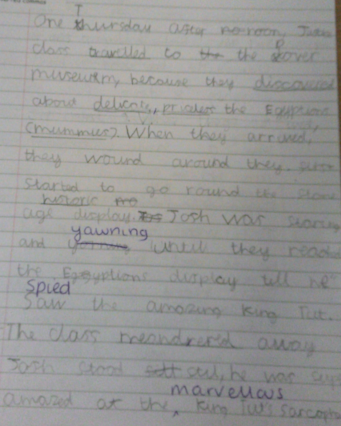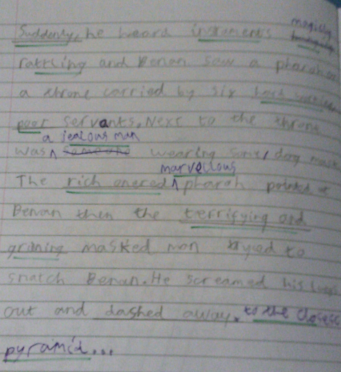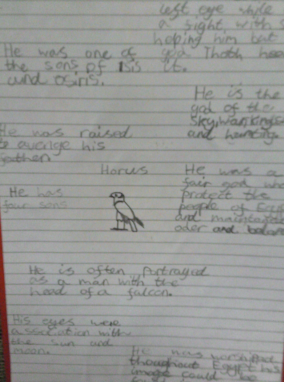Term 3
Mummification
This week we have been focusing on mummification and why Ancient Egyptians mummified people and animals. We have read instructions and learnt about the process of it. We even mummified one of our own!
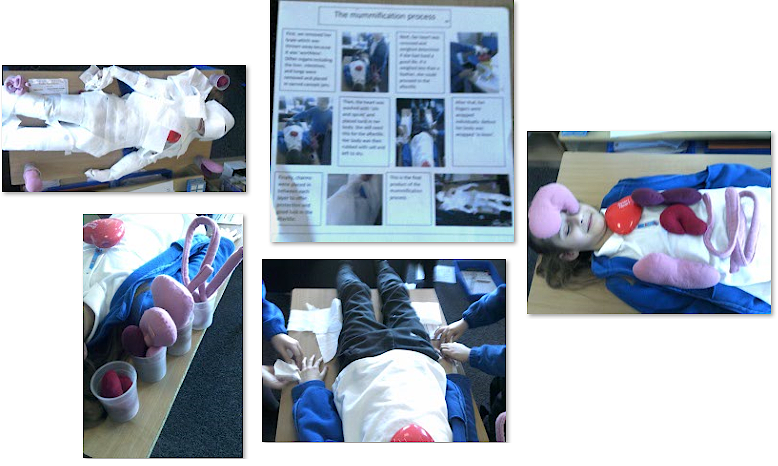
‘The brain was yanked out by a long hook through the nose!’
‘The heart was taken out and weighed against a feather. If it was lighter, you were a good person.’
‘Canopic jars contained the lungs, stomach, intestines and liver.’
‘Natron was a special salt.’
‘They were left for 70 days.’
After this we mummified a tomato, it was messy and fun!
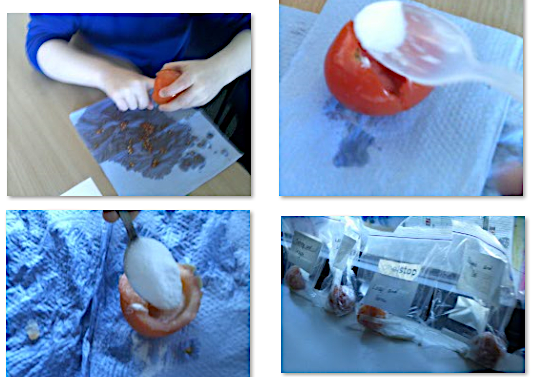
Maths
In Maths, we have been creating different types of graphs and interpreting them. We even drew our own.
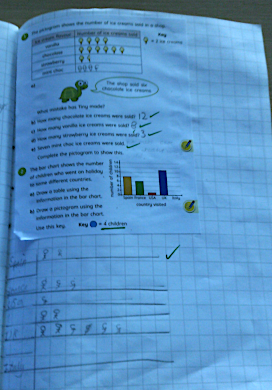
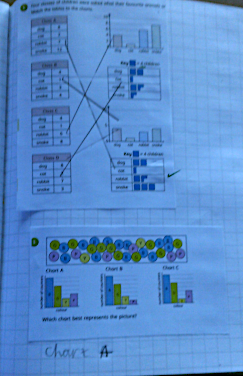
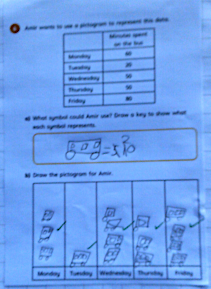
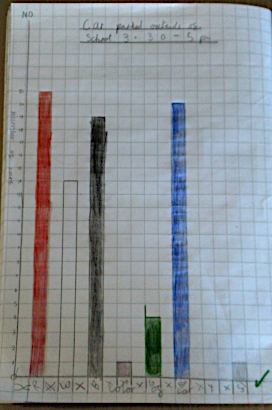
Big Idea
Why do we learn about ancient civilisations? Who were the Ancient Egyptians and how do we know about them? As budding historians, we will travel back in time and develop our knowledge and understanding of how their lives were different to ours and their legacy today. When studying history, we are looking in the mirror at ourselves – looking both backwards and forwards. History helps us understand who we are as a society now, how we got here, and what we learnt along the way. When looking at ancient history, Ancient Egypt has some of the most incredible, compelling, exciting puzzles and mysteries that can be found in studying how humanity began forming civilisations.
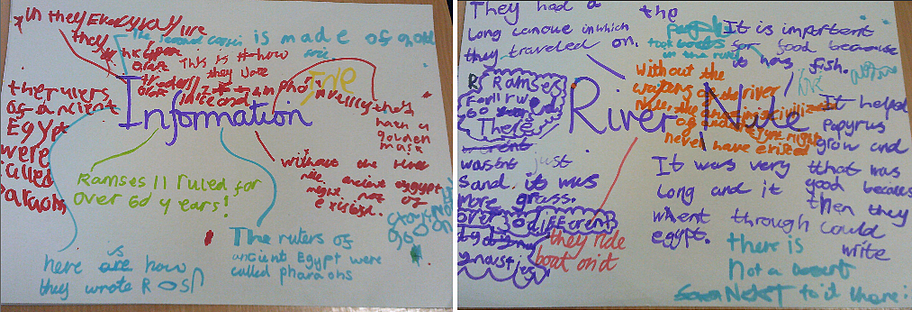
We were asked by a historian to use secondary sources to find out about life in Ancient Egyptian times. We were given books, postcards, hieroglyphs, papyrus paintings, maps, artefacts, sculptures and carvings.
‘People in Egypt used pictures called hieroglyphs for their writing. They were carved into walls on pyramids and told stories.’
‘Tutankhamun was the boy king from the age of 9 to 18. He had a crown of gold and blue gemstones. He must have been powerful to have a gold mask.’
‘Statues were put on the outside of temples to protect them.’
‘Pharoahs are a type of King.’
‘The pyramids and temples were made from sandstone.’
‘The River Nile is a very long river.’
The River Nile stretches from the Mediterranean Sea all the way through Egypt.’
‘It was important for fishing, trade and all the main cities were by it.’
‘When the rich people died, they were wrapped in bandages and their hear weighed. If it was lighter than a feather. they were good.’
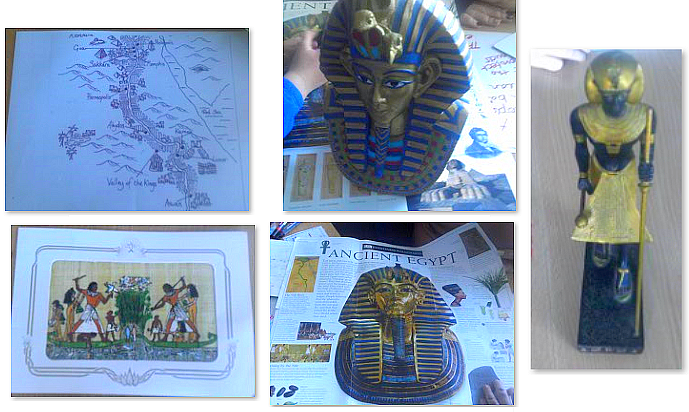
Ancient Egyptians
This week we have been looking at aspects of Ancient Egyptian lives: why the River Nile was important and about their gods.
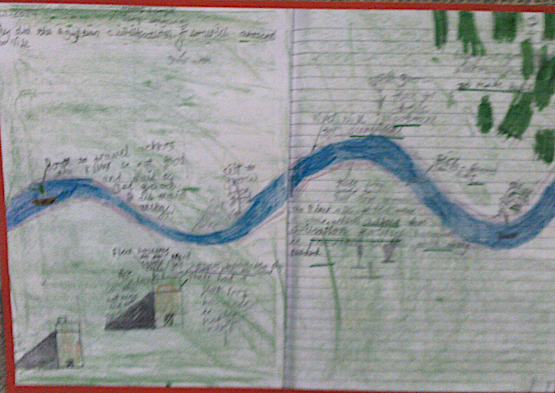
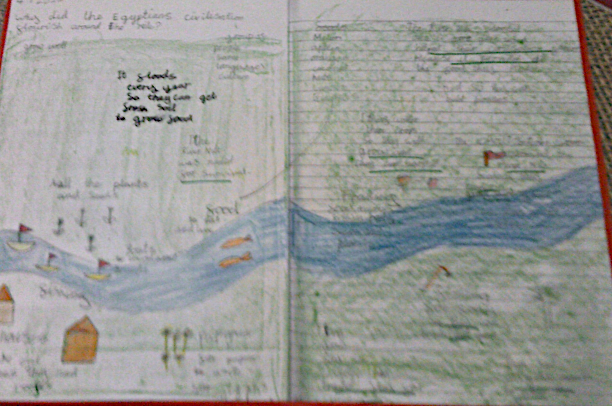
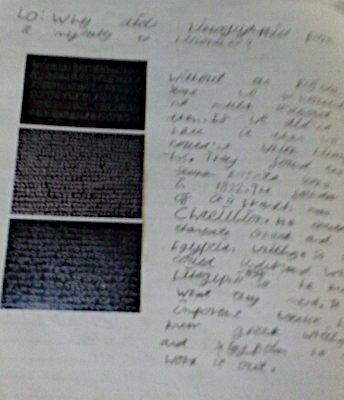
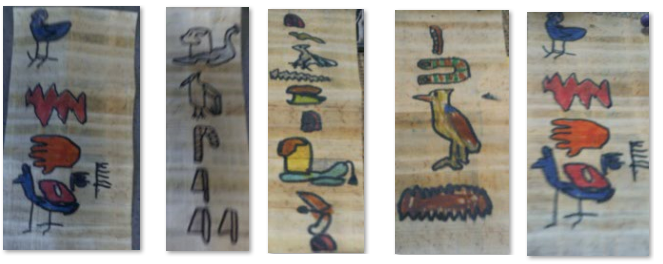
English
In English we have been writing our own time- slip story after reading The time-slip scarab. Read some of our excerpts.
